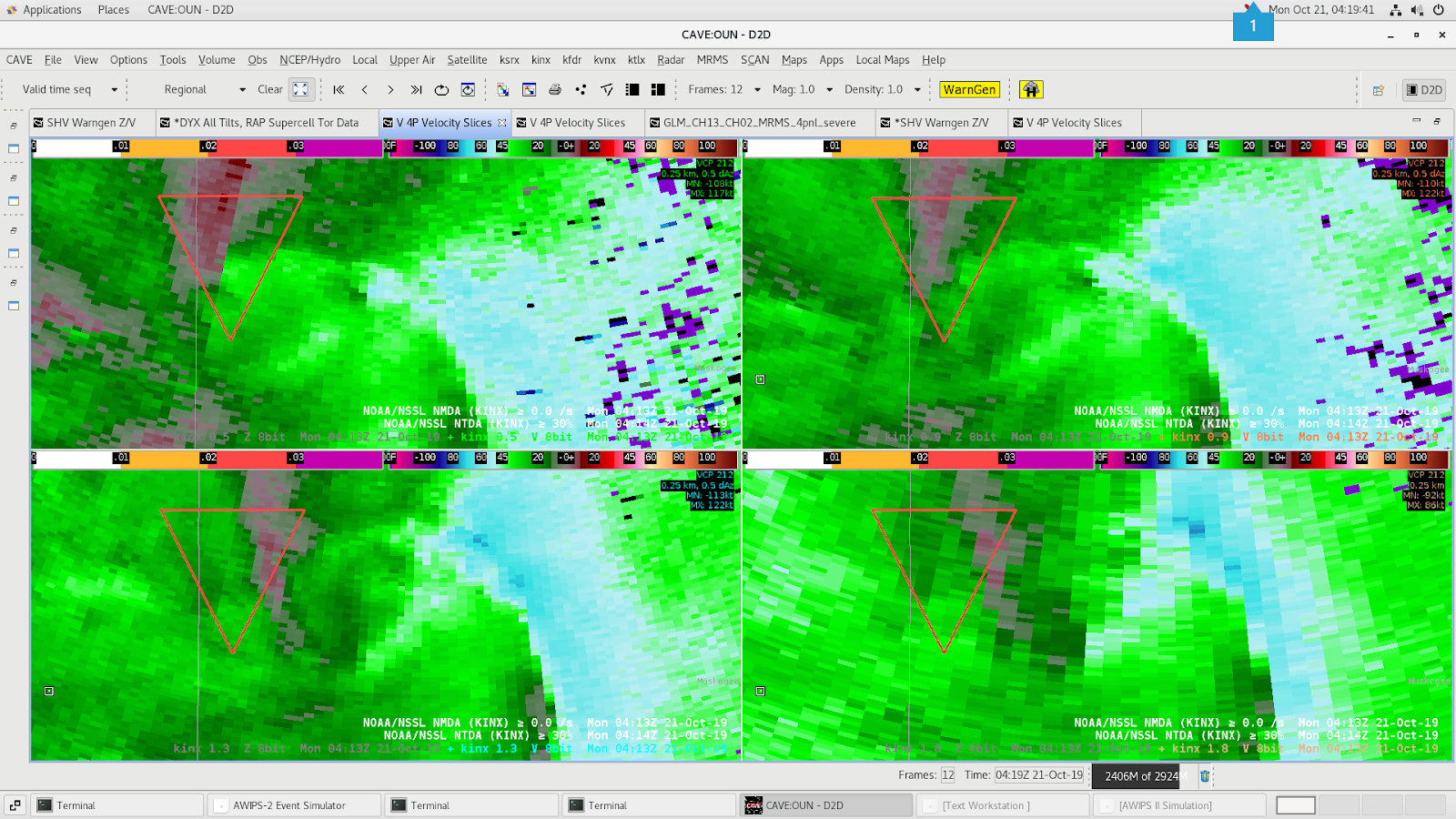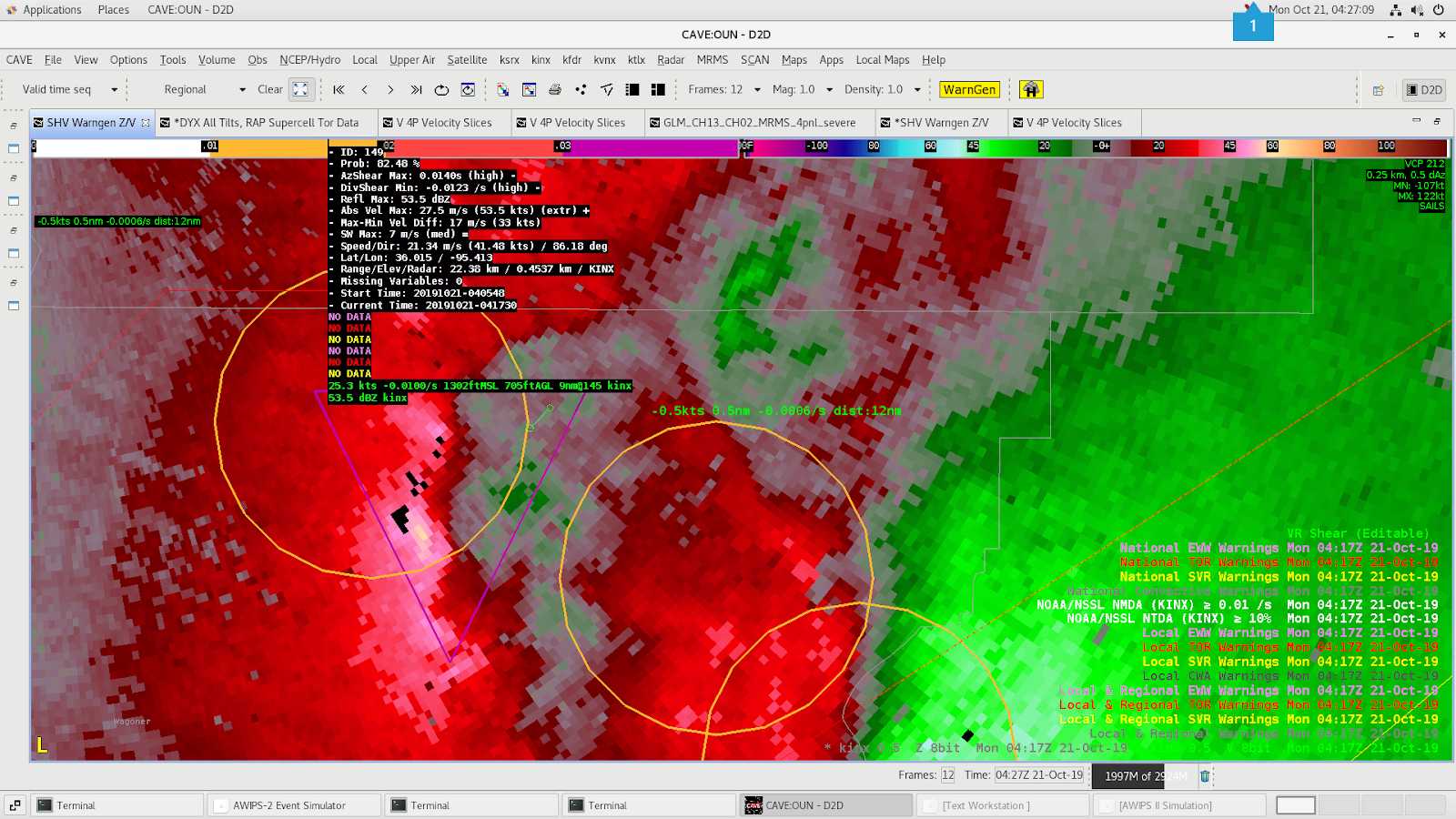The TSA/OUN case was a mixed bag of supercell structures and QLCS storm types. Overall the performance of both the NMDA and NTDA did well. They showed higher values where you would expect to see stronger rotation. I thought both did particularly well with identifying areas along the QLCS where you would expect tornadic development based on the 3 ingredients method. Most of the detections, especially moderate or strong detections, were in favorable regions.
There were two very noticeable issues during the event. The first was caused by a bad radial close to the northern bookend vorticy of the QLCS. The NTDA picked up on the shear near the bad radial and identified it with a higher prob value. But it failed to identify a real couplet slightly further east. This may have been due to the distance requirement between two detections. The NTDA may have filtered out the nearby real detection favoring the artificially higher shear a bit further west. The NMDA didn’t detect either area.


Later on in the event, the NTDA and NMDA detected an area of rotation closer to the KINX radar. The NTDA had a prob of 82% at 04:17Z but then at the next scan (04:19Z) was no longer detecting the circulation, even though it looked tighter than the previous scan. The threshold was set to >= 10% for the NTDA in the image below but I believe even adjusting it to 0% showed no detection. Looking at the velocity data it definitely seemed like there should be some detection on it. The MDA was problematic too. It seemed to detect the two areas of rotation at 04:19Z but they were located well left of the couplet. This could have been because of the known issue with having 3 sails scans in place.


– Gerry Bertier
